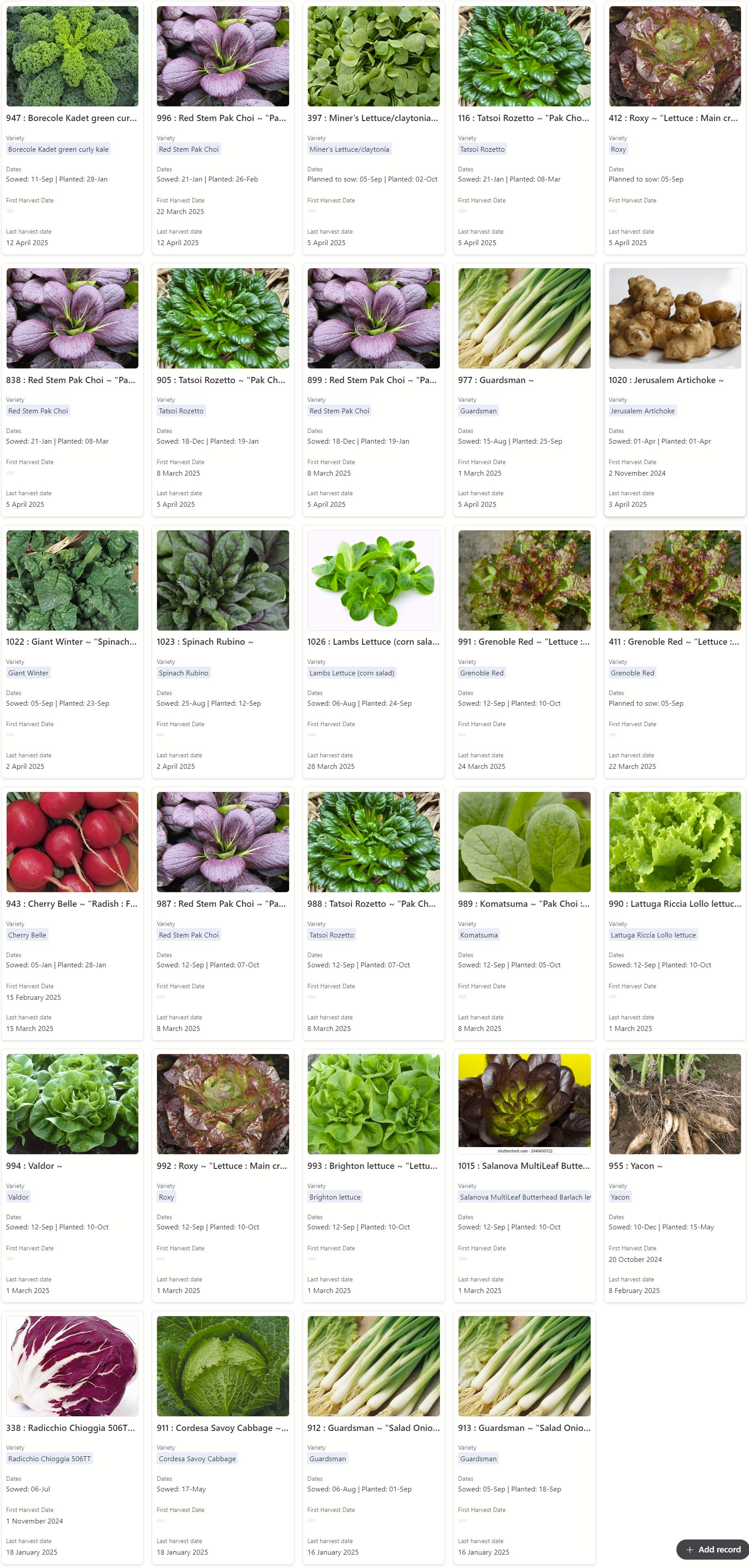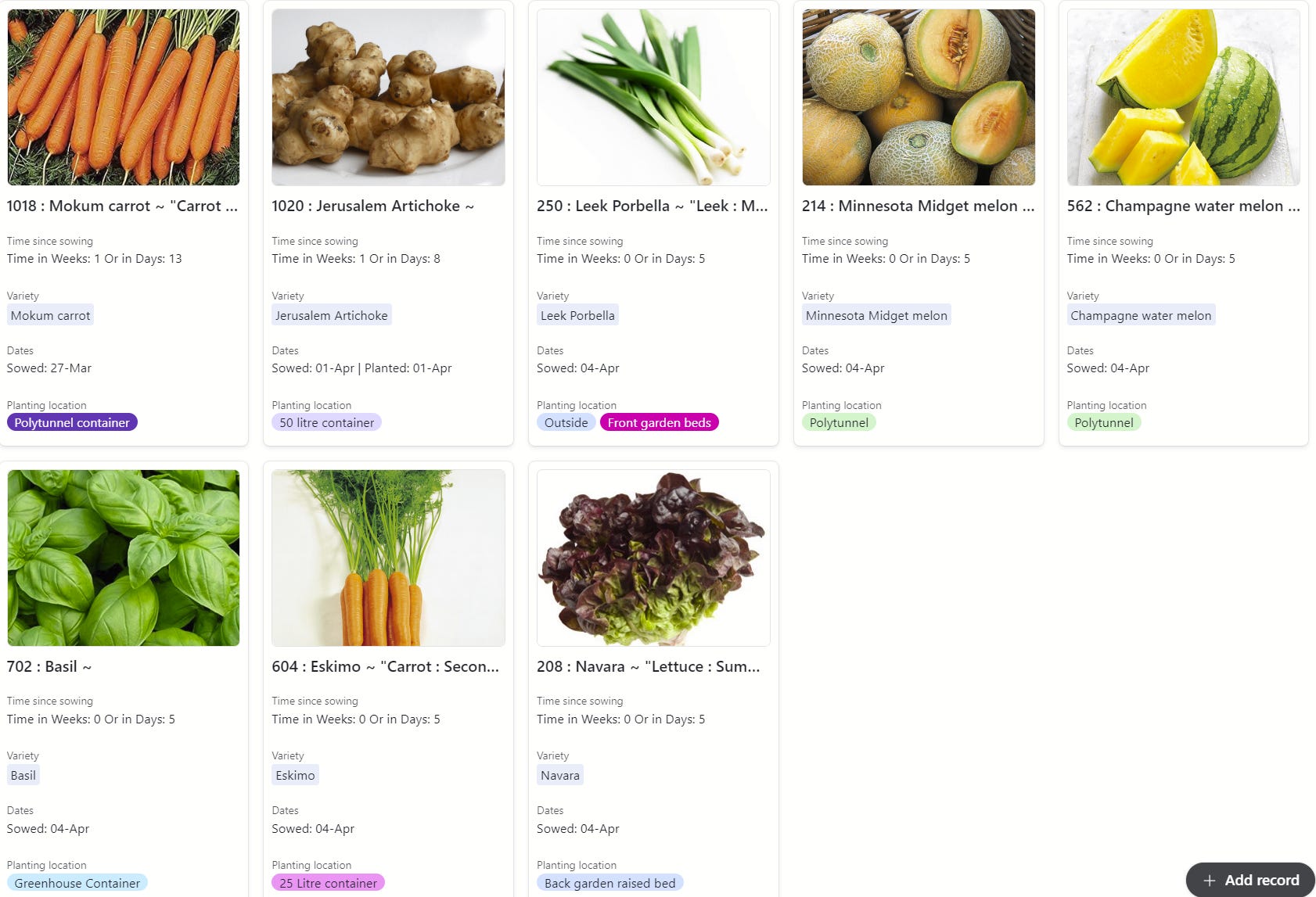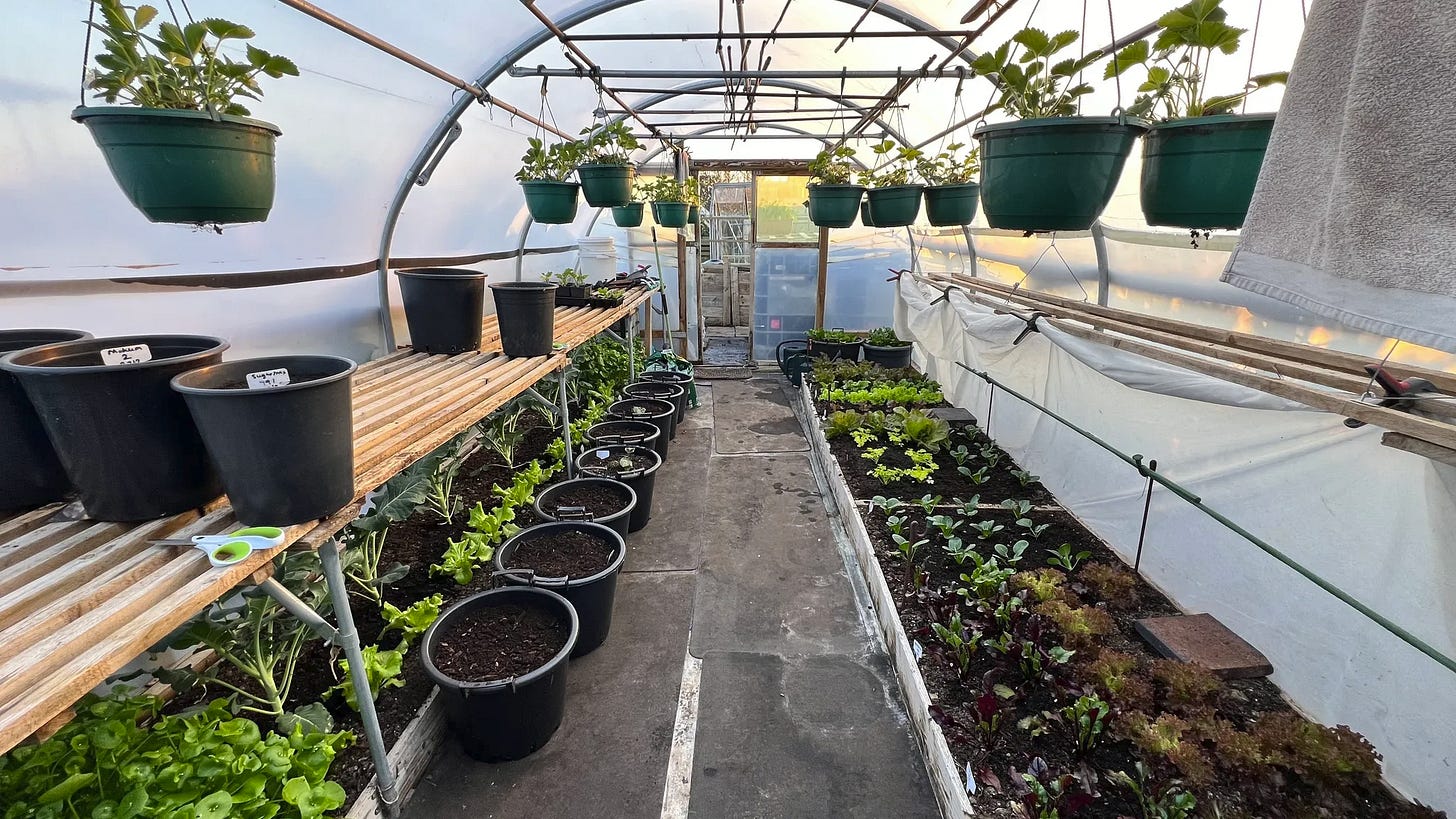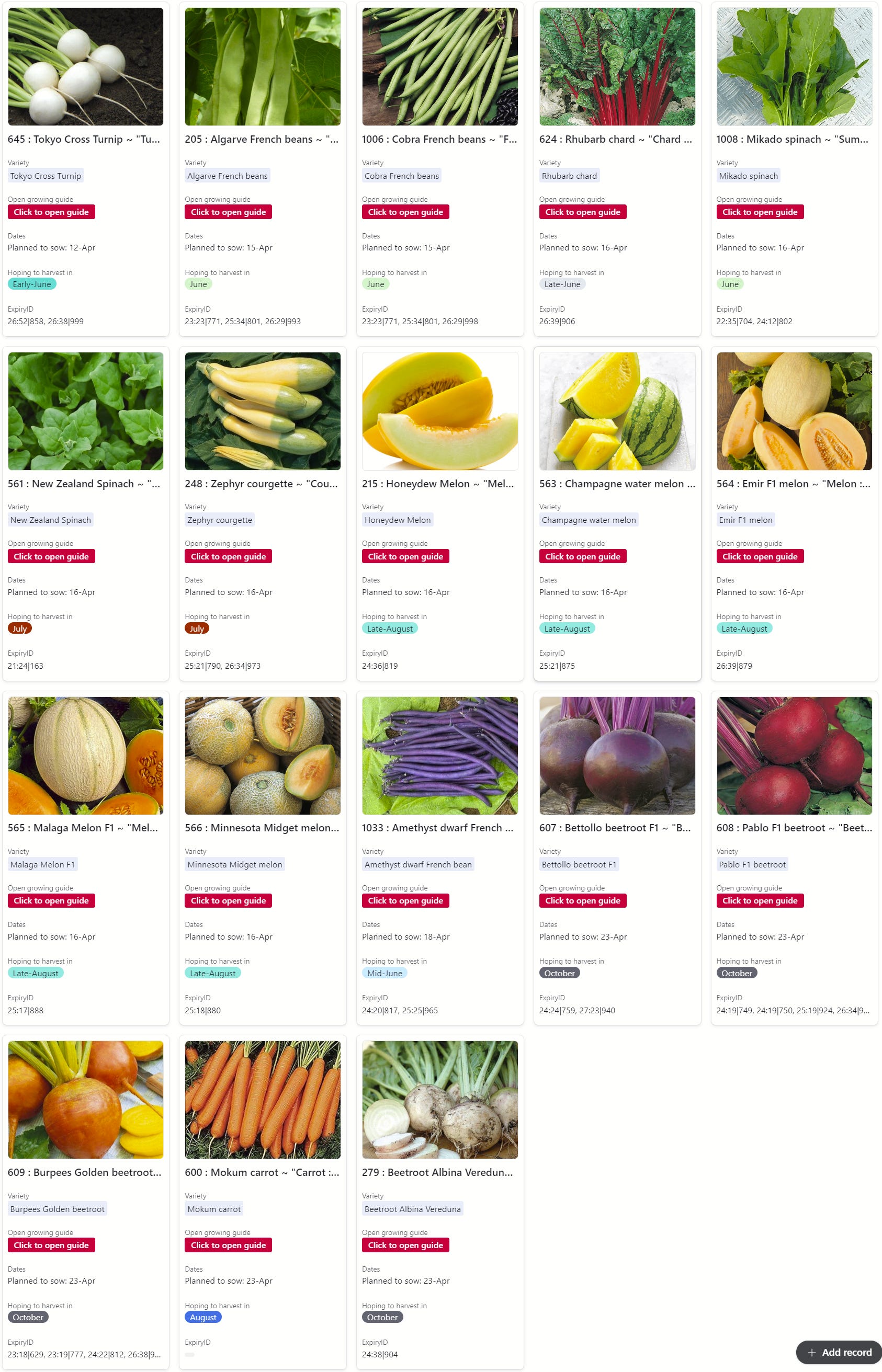Not just gardening
I’m finally back in action, after two weeks resting my hip and allowing it to recover. I gave it an initial test with a high intensity bike ride, which it survived. The next day I gave it a good workout in the hills, doing a lot of climbing and about 17 miles of walking on and around the west shore of Windermere.
I decided to spare it the worst of the climbs though and took a diversion of Hawkshead and eventually made my way back to Ambleside and relaxed on the boat back to Bowness.
Despite these accommodations, it was a good test and it held up well, with only a few miles of aching, which weren’t too bad the following day.
I decided to take a rest the following day and concentrate on some long over-due DIY jobs, including re-painting the rubber roof on our corner shed and doing some preventative work to prevent the bottom of the cladding boards from rotting.
Then it was back on the allotment for a couple of days - see later - with just my normal daily short bike rides.
On Friday I had another hike around the Rivington reservoir system. Both the Rivington resevoirs and Windermere reservoir are looking very low for the time of year, which is always a concern for gardeners. Although it’s not really surprising as we’ve had almost no rain for over 6 weeks.
Gardening problems this week
We are still enjoying warmish sunny days and very cold nights, with the odd touch of frost, that means plenty of Envirotect fleece on the allotment and heating in the greenhouse, but neither are unexpected.
More annoying though is that all of my early calabrese have decided to flower, despite being only moderately mature plants, they don’t have enough big leaves to grow big broccoli heads, which is unfortunate. It’s not the heat though, because another succession in the polytunnel are growing fine and it’s not stress as young plants either, because they were in the frost free greenhouse, during the big freeze in December. So it’s a mystery, like so many mysteries in gardening that can never be reliaby diagnosed because there are too many variables. The lesson learned though - as always - is multiple successions!
My response to an early harvest of calabrese is to enjoy it and be ready to plant something in it’s place. In this case, baby leaf Bull’s Blood beetroot and kales for salads, which I’d sown just in case and in the end - almost - didn’t have anywhere to plant.
I also have one out of 15 cauliflowers that is flowering early, but this plant has a bit more leaf, so it’s likely to get to tennis ball size at least, which makes it a worthwhile harvest.
Old new stuff
Here’s a few reminders of things that are already in the database/book, but that anyone who’s started to follow me recently might not know about.
I’m often asked about the trays and pots that I use, last year I added these to my database, so they pop up in my sowing guides. You can also browse them all together, with my ratings.
I also made a video where I go deep into the containerwise trays and alternatives that I use.
Spring planning overview
As mentioned above, you can now browse my seasonal guides for each type of growing environment that you have, you can find those here.
Pests and diseases of April
It’s that time of year when pests start to re-surface. For me ‘up north’ my biggest concern is carrot fly, which arrives in significant numbers towards the end of April, just as those spring carrots are emerging. I have a whole section in my ebook on dealing with carrot fly, nematodes help, fine nets help but I combine both because carrots are too important to me. I also put my carrot containers up high on my IBC tanks, this puts them close to 2m high and I don’t need nets that high, although I’ve still had a few minor carrot fly issues even that high.
Slugs become an issue now, much more so than over winter when they were mainly just annoying. Since a lot of my beds are under-cover the slugs are very active now and I have a few strategies specific to spring:
I apply nematodes as soon as average soil temperature exceeds 6c, this kills slugs in situ, but only if they are living in the soil and you are able to keep the beds moist. I’m about to apply my first slug nematodes this week
I try to leave some of my plants in the ground for an extra week or two, once I’ve finished harvesting, the slugs migrate into the Asian greens/lettuce etc and they act as traps
Prior to sowing high risk crops, especially carrots and parsnips, I will lay planks on the moist ground, these act as traps, but also as an early warming system. If I see lots of slugs under the planks then I can use a beer trap, or pellets to help clear the bed
Wherever possible I try to spot slugs in the hearts of my plans, while harvesting
Finally I almost always plant out seedlings in modules, when they are big enough to survive a mild attack and I keep spares handy, just in case.
Check out this chapter of my eBook for more.
If you have your over-wintered carrots under cover then I find that the risk of downy mildew increases in April, which is one of the reasons that I move mine outside now, although I was slightly too late for one container, which I’d stressed by not watering deep enough.
Cut worms are also active now, coming out at night and eating through the stems of young and susceptible plants, then hiding away, until the next night when they cut another plant off in it’s prime; very frustrating. Here’s what I do in spring:
prior to planting I ruffle up the surface of the soil (before I mulch with fresh compost) I’m looking for the cut worm grubs. No-dig adherents might frown at this, but I’ve seen no effect on growth and not losing plants is a much bigger risk than 1-2” of soil disturbance, no more than a light raking.
I water with the Fruit and Veg Protection nematode, this should kill cut worms
Prior to planting new seedlings I try to water them in their pots with the Fruit and Veg Protection nematode
If I loose a plant to cut worms I will immediately ruffle up the soil where I lost the plant to see if I can find the culprit, this works about 30% of the time
Keep spares!
If you have your seedlings in the house and over water them, there’s a good chance that you will get fungus gnats (tiny flies) which are very annoying. I tend to find that the combination of yellow sticky sheets and allowing the compost surface to fully dry between waterings is enough to control them. If they are more stubborn I move the plants to the greenhouse. Right now though I have almost nothing in the house.
Finally towards the end of April and especially during May, club root starts to be active. I’ve done a lot of research into club root and developed my own strategy for dealing with it. You can find that here, although it’s not 100% effective as I still loose the odd plant.
First flowers of 2025
We are awash with first flowers this week and all of the gardens are gloriously displaying their blossoms. This co-incides with a slight warming of our nights too, so it looks like they will miss the frosts and we might be in for a bumper year. We had a lot of apples and pears last year and I’m enjoying dried fruit as my snack food on most days.
I will spare you the complete list of every fruit variety we grow, but these are the ones that I noticed at the start of the week, by the end of the week 95% were in flower.
By far the most exciting development this week though is the amount of flowers on our established plum trees. These have been very slow to yield large quantities of fruit, so maybe this will be the year that we finally have plum abundance
For main crop sowings flowering to harvest dates are fairly well documented, but for early successions this data seems to be impossible to find … until now!
First harvests of 2025
Lots of first harvests arriving now, but many of the harvest periods are short lived, radish, turnips, kales and asian greens don’t last long in spring, especially a sunny spring, so you need plenty of successions!
I’m not bothering to log first harvests of many crops in this newsletter now, because they are just repeat successions, so no more lettuces, spinach, radishes, turnips etc. I’m much more excited to record the first peas, tomatoes, cucumbers and tomatoes!
Last harvests
I’m rapidly clearing beds now to make way for new sowings (carrots, parsnips) and plantings. It’s all too easy to cling to marginally productive crops in spring, when it’s much better to be planting for the hungry gap or for summer abundance. Right now we have more than enough food, so I get busy.
Sowings for the week
Nothing this week.
Here’s everything sown to date, in more detail.
Not germinated yet
Nothing of concern here except the Mokum carrots, I’d hoped to be sowing my main summer bed this week, but there’s no sign of them in my test containers. I also sowed a test container of Sugarsnax and they are up and growing well. I will give it a few more days as I can afford to wait, but next week if they’re not up I will be eatin Sugarsnax this summer, which isn’t too much of a compromise.
Germinated this week
It’s been a great week for seedlings and the new raspberries are finally showing some weak signs of life too. I’m particularly excited for the peas, because although I already have loads of peas growing I will have space opening up over the next two weeks for peas and I hate to have empty beds. I only had old sweetcorn seeds available, so I bought a new packet and chitted the old ones and most of them are growing, so I have some early sweetcorn for a change.
Pricked out
Nothing this week
Potted on this week
Nothing this week
Conservatory progress
Although almost everything is in the ground, hardeing off or in the greenhouse, I still have half of my peppers and 1/3 of my cucumbers in the conservatory. It’s hot in here, so I’m misting the leaves to keep the humidity high enough for fruit set. I have the fan on - when I’m not in there - directed at the peppers, so they are growing nice and strong.
The cucumbers are in full flower now and seem happy, I’m interested to compare the harvest time of the greenhouse and conservatory plants.
Greenhouse progress
I now have my first strawberry, tomato and pepper fruits growing well, the cucumbers have a lot of flowers, with embryonic fruits but none have been pollinated yet. The peas are outside, but ready for harvest now, although I’m waiting until next week for them to fill out slightly more. The apricot fruits are growing very well and the necatrines are just starting to show. I’ve just planted out the early French beans and I’m very excited for those as it’s been quite a few months since I’ve eaten beans.
The greenhouse has proved to be tricky to manage over the last couple of weeks. Light frosts or just above freezing most nights, a cold wind during the day and very sunny. The greenhouse is full of heat loving plants that need 15c (or thereabouts) at night to set fruit and they are in full flower. What to do!
Based on my experience last year I know that the greenhouse yields a very high value set of crops, it’s really amazing the value of peppers, tomatoes, cucumbers, courgettes, strawberries and beans that I end up harvesting in May, June and early July that I otherwise would have to buy. As a result I don’t mind heating the greenhouse for a couple of weeks. Last year, lacking that confidence, I only heated it to 10c and that delayed fruiting by several weeks, that was a lot of lost harvests. This year I know better.
To minimise the heating costs, I’m closing up the greenhouse tight, 2 hours before sunset, this heats the fabric of the greenhouse up quite a bit. During the day I’m maximising ventilation after 10am, so I have a lot of bees in there at the moment and it’s staying below 30c most of the time!
The two successions of peas are outside now, all of the rocket, beet and chard leaves. Many of my seedlings are outside on top of the wall, including the strawberries, salad onions, lettuce and more. I’ve also moved the apricot and nectarine tree outside.
It’s a little cramped in the greenhouse now and it will get worse, but to be honest the joy of watching so many fruits growing, more than makes up for it. There’s a lot of change coming to the greenhouse planting as we get into summer, but until at least July, it’s essentially done.
Polytunnel progress
Nothing much has happened in the polytunnel. As carrots germinate, they are moving outside onto my IBC tanks, Almost all of the beds are replanted. I’d planned to clear the Claytonia, but in the end I gave it another week as it’s so healthy and I have nothing ready to replace it with.
I will be moving the second batch of potatoes outside this weekend, once the risk of frost (for now) is over. I’m pleased that I protected the early potatoes!
Allotment and garden progress
I’m busy clearing beds now. I have three main allotment objectives, first to get some parsnips sown within the next couple of weeks, second to get the summer/autumn beetroot planted and third to get the late summer/autumn carrots sown. All of this means bed clearing.
I made a start this week and cleared the brussels and planted my third batch of beetroot. The peas and broad beans will be set free of their covers this week too, again, I’m waiting for the frosts to finish, even though neither minds a frost, cold winds aren’t great.
In the kitchen garden I’ve cleared my first - of four - kalette beds and planted beetroot and salad onions and I’ve planted everbearing strawberries interplanted with shallots. I’ve no space left to plant now, until I clear more kalettes, which won’t be long.
Debbie’s plot is all ready for planting too, but I’m really waiting for May before I plant that up.
Planted this week
Gradually clearing and re-planting beds. I’m trying to inter-plant salad onions into long lived beds like beetroot, where I can because last year I ended up with too many beds dedicated to salad onions, after their lettuces had been harvested, these tied up beds that I wanted to re-plant.
Here’s everything planted this year so far.
Waiting to be planted out
Almost everything is planted now, but there’s always something! I have very little space left for these early plants, so I will probably fill up empty containers, keeping my main beds free for the March sown main-crop sowings, which will be ready in early May.
Now that I’ve seen my calabrese starting to flower, I will plant up around them with baby leaf kales and beetroot for a hungry gap harvest and plant to clear these by the end of May, ready for the melons.
Sowing’s for next week
It looks like another busy sowing and pricking out week to come. Everything for the spring and early summer is planted now, so all focus turns to summer, autumn and winter crops.
Growing guides for April
This link takes you to all of my monthly guides, where you can find a lot more than just my sowing guides. I particularly like the list of videos produced in the relevant month in years gone by. Click here for April’s guides.
Because I’m always experimenting you might find me sowing a few things that are not on this list, but you can always look those up from the complete list of guides, which you can find here.
Sowing Guide for April
Here’s a link to the details.
Weekly Harvest
It looks abundant, but I’m itching to have more fruits on the table!
Useful links
Top level links
The website associated with this newsletter
My free eBook - Outgrow : The Art and Practice of Self-sufficiency
My complete gardening database real time access to everything!
My Amazon shop, which lists the gardening products I use, with comments
If you can afford it, you can buy me a cake or some seeds
The most useful lower level links
The reference info section of my eBook, lists what I actually sowed, planted, harvested each month, plus all of the tours and guide videos for that month
Monthly growing guides (what to sow, harvest fresh and eat from the store room each month)
Comprehensive growing guides to every type of veg that I grow
The section of my eBook that covers the basic tools and techniques of gardening (sowing, planting, pests, weeds etc)
The section of my eBook that covers the more advanced tools and techniques of gardening ( extending the season, successional plantings, spacing)
Using grow lights and alternatives to extend the season
Introduction to growing under cover with fleece, low tunnels, polytunnels etc
The chapter of my eBook that covers conservatory gardening
The chapter of my eBook that covers greenhouse gardening
The chapter of my eBook that covers polytunnel gardening
The chapter of my eBook that covers cold frames and low tunnel gardening
The chapter of my eBook that covers extending the season with fleece
The chapter of my eBook that covers outdoor gardening
A guide to my database, how to use it and how to take a copy of it
Useful database links
The types of veg that I grow, roughly ranked in my order of priority
The varieties of herbs, fruit and veg that I’m growing this year
Overview of all of the successions for year round gardening (I don’t grow/recommend all of them) main crops successions are the most reliable
What I’ve sowed so far this year
How long each type of seed typically takes to germinate
What I’ve planted to far this year
What I’ve harvested so far this year
First harvest dates for key successions
The pots and trays that I use with my comments and ratings
The nets and other covers that I use with my comments and ratings
Information on root depth for each type of veg
Information on germination temperature for each type of veg
Information on pesticide use for each type of fruit and veg
List of fruits and veggies that benefit from Mycorrhizal associations
How long seeds last for each type of veg
Which types of veg are heavy, medium and light feeders
Outgrow : The Art and Practice of Self-sufficiency is a reader-supported publication. To receive new posts and support my work, consider becoming a free or paid subscriber.
Outgrow : The Art and Practice of Self-sufficiency is a reader-supported publication. To receive new posts and support my work, consider becoming a free or paid subscriber.
























